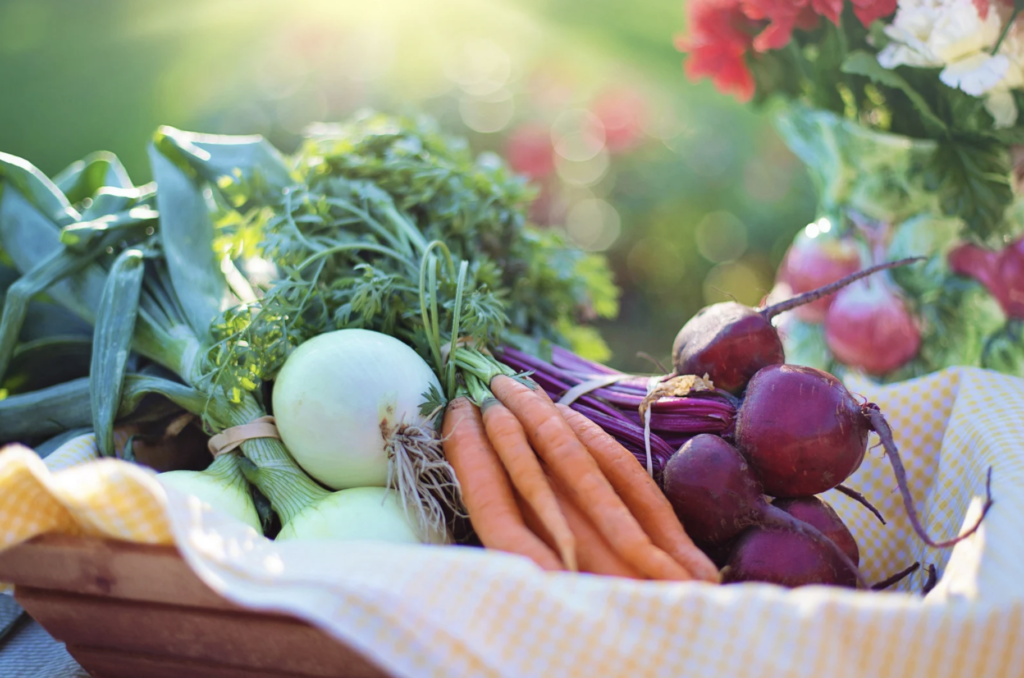Eat your vegetables day
Vegetables are an important source of a multitude of vital nutrients like vitamins, minerals, and fiber in your diet. If you aren’t already including loads of veggies in your diet, the “National “Eat Your Vegetables Day” that falls on June 17th is a good day to pick up this amazingly healthy habit. National Eat Your Vegetables Day is celebrated to raise awareness about plant-based nutrition and its role for a healthy lifestyle.
Vegetables are versatile and can be cooked in a variety of ways. You can discover many delicious recipes to incorporate veggies into your daily meals. A colorful salad, a veggie curry, a hearty soup, and a simple stir fry can all help you spruce up your veggie intake.
There are so many varieties of vegetables that you can enjoy today. Here are some of the basic veggies you can include in your diet.

1. Spinach
Spinach is the quintessential leafy green vegetable. It is full of antioxidants, which are known to decrease the risk of health problems. One cup of spinach is made of mostly water and 7 calories. It has vitamins A, C, and K. It also has magnesium, folate, iron, and calcium. Best of all, it has no fats.
How to eat: Spinach can be added to salads or soups. It can also be added to curries. People also add spinach puree to breads or rice to give it a fresh green color.
2. Carrots
Carrots are best for your eyes. They have vitamin A in the form of a pigment called beta-carotene, which gives carrots their orange color. It is an antioxidant that can prevent illnesses like cancer.
A cup of chopped carrots contains 52 calories and four times the required amount of vitamin A, in the form of beta carotene.
How to eat: You can eat carrots raw or cooked. You can make some carrot sticks and eat it with a dip of your choice. You can also add it to soups, salads, curries, rice, or stir-fries.
3. Broccoli
Broccoli is a cruciferous vegetable. It contains the phytochemical sulforaphane, which reduces the risk of cancer. It also has vitamins K and C, folate, manganese, and potassium. A cup of chopped and boiled broccoli has only 31 calories.
How to eat: You can grill, stir fry, boil, or roast broccoli. Add it to soups and salads, curries, rice, or any other preparation.
4. Tomatoes
Tomatoes are considered a fruit. But most people eat them like vegetables in savory preparations. A cup of chopped, raw tomatoes has 32 calories. It also has potassium, vitamin C, and an antioxidant called lycopene. Lycopene help prevent diseases like cancer.
How to eat: People enjoy tomatoes raw or cooked. They are best for sauces, chutneys, salads, and soups. Cooking tomatoes releases larger quantities of lycopene. So, add them to curries, rice, and pasta for a tangy and nutritious punch.
5. Sweet Potatoes
Sweet potatoes also contain vitamin A in the form of beta-carotene. It promotes eye health and helps fight diseases like cancer. One medium-sized sweet potato contains 86 calories, which is half the calories in a medium potato. Sweet potatoes have high fiber content and a low glycemic index. This makes them perfect for those who have diabetes.
How to eat: Sweet potatoes are a great replacement for regular potatoes. You can make sweet potato fries or mash. You can roast or grill them. You can also add them to soups and curries.
6. Mushrooms
Mushrooms are a great source of protein and fiber, which makes them a great plant-based meat alternative. They contribute to brain and heart health and help prevent diseases. Mushrooms contain vitamins B and D. A cup of mushrooms contains 22 calories.
How to eat: Mushrooms are extremely versatile but they must be eaten cooked. They can enhance the flavor of any dish, be it a soup, stir fry, salad, or just a plain old sandwich.
7. Garlic
Garlic is a vegetable that is often used to enhance the taste of other foods. It is known for its medicinal properties. A clove of garlic has only 4 calories. It has less vitamins and minerals. But, it is a natural antibiotic, which protects your body from infections.
How to eat: Cooking garlic reduces its health benefits. It is best to eat garlic raw or semi-cooked in salads, soups, dips, or sandwiches. Garlic is flavorful and can enhance the taste of any dish.
8. Beets
Beets are great for heart health. It has anti-inflammatory and antioxidant properties, which improve blood pressure and prevent oxidative stress. The antioxidant in beets can fight health problems like diabetes and related nerve problems. A cup of raw beet has about 58 calories. It also has potassium, folate, and other nutrients that help heart health.
How to eat: You can roast beets to bring out their natural sweetness. You can also have them raw in juices, salads, and sandwiches. Add them to give a natural red color to foods like rice or breads.
9. Bell Peppers
Bell peppers are rich in vitamin C, vitamin B-6, and folate. It contains antioxidants like beta-carotene, which protects your eyesight. A cup of chopped bell pepper has 39 calories.
How to eat: Bell peppers are red, yellow, green, or orange in color. They are great to add color to salads and other dishes. They are extremely versatile and can be added to pastas, rice, or eggs. You can also enjoy them raw with a dip like hummus.
10. Onions
Onions are an essential vegetable for cooking. They contain sulfur compounds, which are said to prevent disease like cancer. They contain vitamin C, B-6, and manganese. A cup of chopped onions provides 64 calories.
How to eat: Onions can be eaten raw or cooked. Raw onions are great for salads. You can pickle them for added flavor. Cooked onions can be used for sauces, soups, curries, and many other tasty dishes.
Add vegetables to your diet
Eating vegetables each day is important for health. They provide essential vitamins, minerals, and other nutrients, such as antioxidants and fiber. So this National Eat Your Vegetables Day, start adding these tasty but healthy vegetables to your diet.
